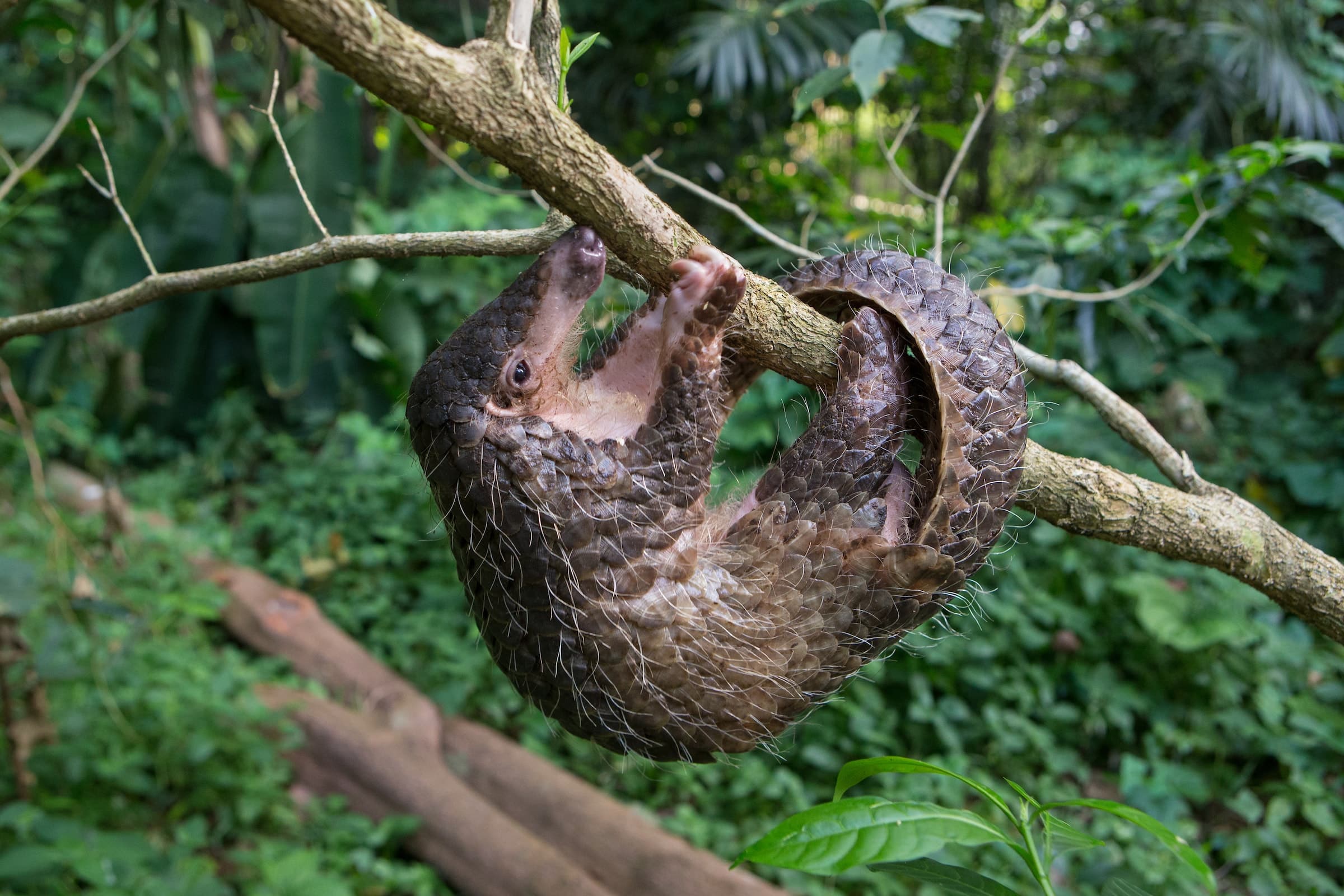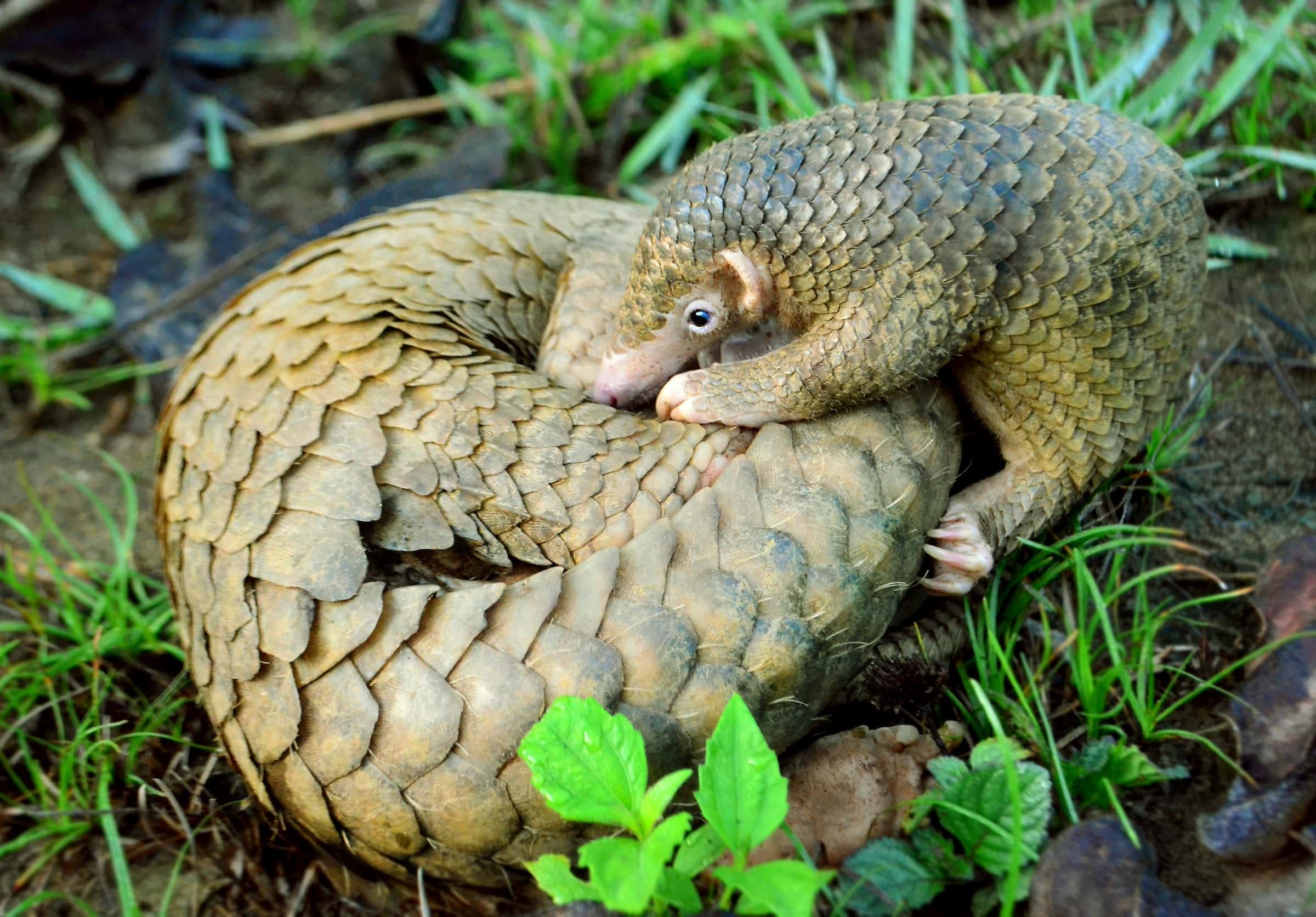Two of Asia’s pangolin species are distinctly arboreal, or tree-dwelling, and inhabit the tropical ecosystems in Southeast Asia—the Sunda pangolin and the Philippine pangolin.

The Sunda pangolin, also known as the Malayan pangolin, live in forested habitats and converted plantations throughout Southeast Asia, including Myanmar, Thailand, Cambodia, Laos, Malaysia, Singapore, Vietnam, and the islands of Borneo, Java, Sumatra and the Lesser Sunda Islands. They spend much of their lives in trees and have semi-prehensile tails—a unique feature that allows their tails to grasp tree branches for support as they tear through the bark to expose insect nests. All pangolins get their name from the Malay word pengguling, which means ‘thing that rolls up,’ a distinctive defense tactic shared amongst pangolins. Sunda pangolins are listed as Critically Endangered.

The Palawan pangolin, also known as the Philippine pangolin, is found solely in the Philippines. They were identified as a unique species distinct from the Sunda pangolin in 1998. These island pangolins have a particular affinity for fig trees, which provide hollow shelters and attract tree ants, their primary food source. Though they spend much of their lives in trees, they have also been known to forage on the ground. Palawan pangolins have the most rows of scales compared to the rest of Asia’s pangolins. These unique island pangolins are Critically Endangered.

